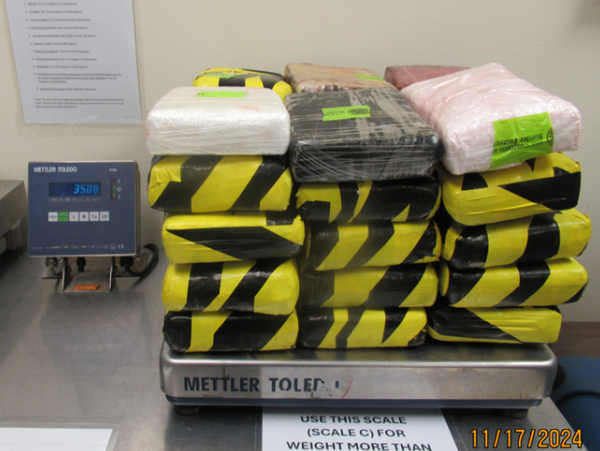
Imagine a treatable condition poised to sweep through many parts of our country, threatening to sink our healthcare system under trillions of dollars in costs and alter our society as we know it. In a modern, highly sophisticated nation, one might ask what we can do to prevent this disaster. Yet, here we are, and the silence is deafening.
Dr. Catherine Birndorf, a reproductive psychiatrist and founder of The Motherhood Center of New York, states, "Whatever you believe about a woman's right to have an abortion, the irrefutable medical fact is that forced pregnancy — when a woman or girl becomes pregnant without seeking or desiring it, and abortion is denied, hindered, delayed or made difficult — will profoundly increase the number of perinatal mood and anxiety disorders (PMADs) in women and birthing people, also commonly known as postpartum depression."
Before the overturning of Roe v. Wade, the CDC estimated that approximately 800,000 to 950,000 women experienced perinatal depression and anxiety disorders each year, with 80,000 being acute cases, making it one of the leading causes of maternal mortality in the United States. At least one in five pregnant and postpartum women suffer from PMADs, with a notably higher incidence among women of color.
Dr. Birndorf suggests that these numbers were even higher when accounting for the lack of treatment due to shame, stigma, inadequate maternal mental health services, insufficient psychoeducation, and the absence of mandatory screening requirements. She also believes that the number of untreated PMADs will skyrocket over the next few years with restrictive abortion laws taking effect and the lack of available treatment.
When asked about treatments for PMADs, Paige Bellenbaum, a social worker and co-founder of The Motherhood Center of New York, added, “To make matters even worse, untreated PMADs cause not only mental illness but also physical illnesses that affect women, their children, and their families for life.”
Various studies in maternal health have shown that these issues include higher rates of preeclampsia and C-sections, chronic mental health problems, chronic substance abuse, diabetes, heart issues, maternal attachment issues, impaired family and social relationships, suicide, worse overall long-term physical health, and reduced maternal productivity and labor force participation. Children can also suffer from lower birth weights, higher NICU admission rates, higher SIDS rates, behavioral, cognitive, and developmental issues, child/adolescent obesity, reduced educational attainment, higher rates of substance abuse, and worse long-term physical and mental health. Bellenbaum also stated, “many studies show this is an unending generational problem.”
According to our estimates at The Motherhood Center, an untreated PMAD can incur a cost of $1,000,000 to $2,000,000 over the lifetime of the mother and child (and sometimes the entire family), accounting for the medical expenses of potential diseases faced by women and their children. Acute cases can also result in multiple hospital stays, each costing $2,000 to $3,000 per day for a week or more. Without proper treatment, as a nation, we face increased maternal morbidity and mortality, including suicides and homicides, leading to tragedies like the one last summer when a New York City doctor killed herself and her baby during what appeared to be a postpartum psychotic episode.
Even with appropriate treatment, insurance companies often refuse to pay enough to cover the minimum cost of care. As chief financial officer of The Motherhood Center, when negotiating rates, I highlighted the long-term health impacts of untreated PMADs to a manager of a large insurance company, only to be told that it was not their problem, as insured individuals stay on plans for an average of 2 to 3 years. Despite mentioning the potential for acute outcomes like death, there was no adjustment in the reimbursable rate for services.
Additionally, despite some funds being allocated to PMADs by various local, state, and federal governments, it is far from sufficient to adequately invest in programs and services needed to treat those suffering. This leaves a gap in coverage through Medicaid and other public assistance programs.
How can states legislate forced pregnancy and motherhood without providing adequate healthcare coverage or policies to treat the likely PMADs and their many medical complications exacerbated by these laws? States with restrictive and banned abortion laws cannot have it both ways. They cannot ignore the economic impact on their budgets and healthcare systems, which could cost an estimated $250 billion annually in the U.S. healthcare system over the lives of mothers and their children (calculated by estimating the number of forced births in states with restrictive abortion laws multiplied by the $1,000,000 to $2,000,000 of healthcare costs for an untreated PMAD for the lifetime of the mother and child).
Without adequate treatment, states also face potential hospital stays costing $30,000 to $150,000 per woman. Many of these women will be low-income and on Medicaid, while others will have private insurance. These increasing costs and the number of cases could cripple hospital, educational and state healthcare systems. Beyond the forced harm to a woman's mental and physical health, the economic losses incurred by states that have banned or restricted abortions could create substantial budget deficits. The federal government will also bear a steep price for its programs, as well as insurance companies.
Even if treatment is available, like at The Motherhood Center of New York, for the surge of PMADs caused by forced pregnancies and motherhood, there are insufficient facilities, and no insurance company or state or federal body is willing to pay for the actual cost of care to fully heal these women. It is a short-sighted healthcare policy when good treatment is much cheaper than the millions of dollars in potential long-term health costs and multiple hospital readmissions per case of undiagnosed or untreated PMADs.
A tsunami is coming. Women and children will experience deep trauma, long-term mental and physical ailments, and even death. If the injury to women, their families, and society as a whole is not enough, perhaps state and federal legislatures and insurance companies will care when they understand that the increased number of untreated PMADs will drive healthcare costs into the trillions of dollars in the coming years. If there is a country-wide ban on abortions, I believe many states will be driven into great fiscal distress. This could be one of the biggest financial healthcare disasters caused by human actions in the 21st century. Is anybody listening now?







